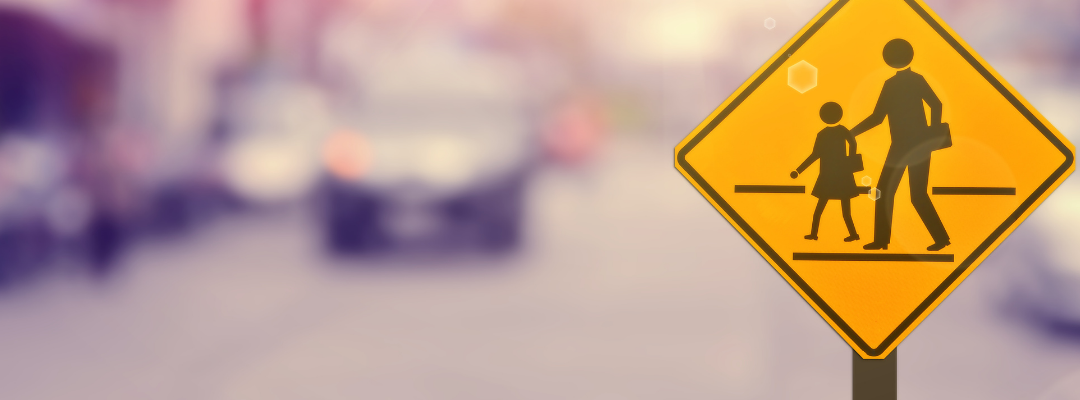Star Rating for Schools Global Programme Coordinator Rafaela Machado was recently interviewed for an Intertraffic article ‘Vision Zero and the race to reduce road deaths’ (Published Monday 7 June 2021).
Below are some excerpts from the article:
Road safety in United Nations Sustainable Development Goals: Children first
For Rafaela Machado, the International Road Assessment Programme’s (IRAP) Star Rating for Schools Global Coordinator, believes that educating junior school children is key to instilling the idea of road safety into the mind’s of our future drivers. Star Ratings for Schools (SR4S) is an initiative of the International Road Assessment Programme – a charity with a vision for a world free of high-risk roads – and is designed to help countries meet these global targets for child and adolescent pedestrians. It is a systematic, evidence-based approach to measure, monitor and communicate the risk on roads around schools.
“Each day 500 children are killed in preventable traffic crashes around the world. The United Nations has included road safety in its Sustainable Development Goals (SDG) and set Global Road Safety Performance Targets. Target 3 reads ‘By 2030, all new roads achieve technical standards for all road users that take into account road safety, or meet a three star rating or better’. Target 4 points out that ‘By 2030, more than 75% of travel on existing roads is on roads that meet technical standards for all road users that take into account road safety’.
“Each day 500 children are killed in preventable traffic crashes around the world.”
The road features and traffic conditions that affect pedestrian safety on a journey to school are known. SR4S allows the easy assessment of each of these features and using evidence-based research of their impact on safety, a Star Rating can be calculated at spot locations, where 1-star is the least safe and 5-star is the safest. SR4S combines a central web application and a data collection Android app to harness the power of the IRAP Star Rating for Pedestrians.
Says Porte Alegre, Brazil-based Machado: “Once the risk is measured, effective scenarios of road treatments and their impact on safety can be simulated to identify cost-effective solutions. The implementation of the treatments can ultimately be tracked so that the partner and funder can see the benefits of their investment and the school teaching staff can educate the pupils on the correct use of the treatments.”
SR4S can be used at different stages of a school zone assessment project and with different purposes:
- Measuring safety before and after road improvements.
- Prioritising areas for interventions.
- Providing evidence-based rating of road safety.
- Supporting education campaigns for students, drivers and the wider community for safe travel around schools.
- Guiding decision-makers on the selection of road upgrades around schools by assessing different treatment options and combinations.
“SR4S is recommended as a complementary tool to support the programmes already established by different organisations and governments. The SR4S methodology has already been applied by partners leading assessments around 730 schools in 44 countries,” Machado says. “These projects put the school communities at the centre of the discussion and empowers youth on advocating for safer roads through technology and global and internationally recognised metrics.”
Improve road safety around school zones in Ho Chi Minh City
As an example of global collaboration, in Vietnam, AIP Foundation has partnered with local government in Ho Chi Minh City and Gia Lai Province to assess and improve school zones, supported by Safe Kids Worldwide and FedEx, and by Fondation Botnar, the Global Road Safety Partnership (GRSP), Nissan Motor Corporation, Federation Internationale de l’Automobile (FIA), and Kova Paint Company, respectively.

“SR4S was integrated as part of AIP Foundation’s strategy to educate children and community members, support legislative change by increasing collaboration with local government and police enforcement, and assess infrastructure to guide upgrades,” she continues.
“Star Ratings for Schools was integrated as part of a strategy to educate children and community members, support legislative change by increasing collaboration with local government and police enforcement.”
School community empowered in Colombia
School principals, students and parents are key organisms for the success of school assessments, through valuable inputs that inform critical locations and routes and demand safer streets. In Colombia, as part of the Bloomberg Initiative for Global Road Safety, Bogota Mobility Secretariat launched their 2000th safe school zone.

“Here the SR4S reports were used in the process of engaging the community and developing support for the intervention among local decision makers, residents and the school community,” Machado concludes. “The countermeasures were first tested with temporary materials to verify their impact. Cones and plants were introduced to create safe pedestrian crossings to the school, protect vulnerable users and enforce motorised vehicles to travel at a safe speed. After adjusting detailed designs and meeting with the community to discuss impressions and results, a permanent solution was implemented.”


















